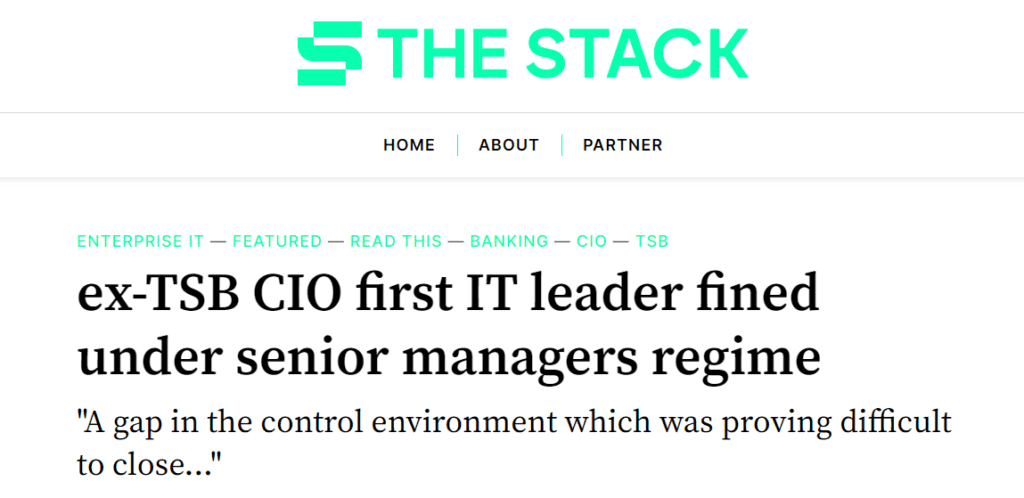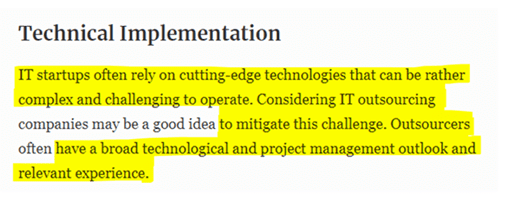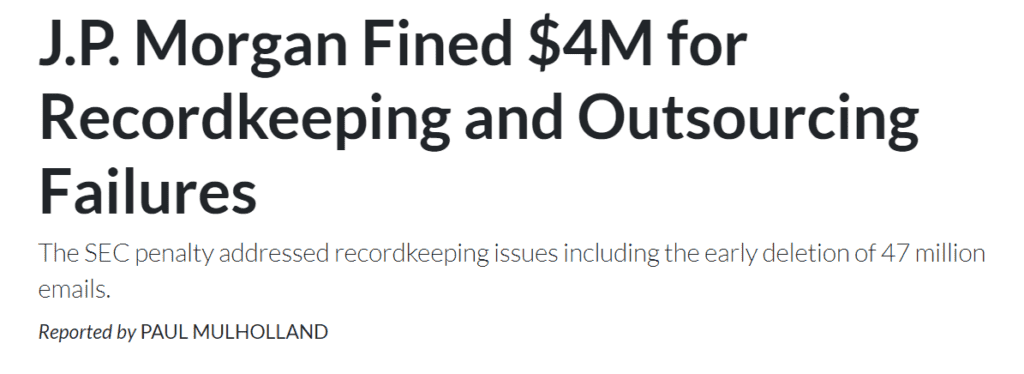What causes IT outsourcing to go wrong? How can you avoid these problems?
The benefits of offshore IT talent are considerable and for the vast majority of firms, adding remote employees to their teams is a no-brainer. Gains include lower costs, access to talent that’s in short supply in home countries; freeing business leaders to focus on higher value activities, freeing salary costs for investment.
Read: 5 Huge Financial Advantages of Outsourcing your IT & Development Functions
IT outsourcing does occasionally hit the headlines for the wrong reasons.


Source: The Stack
Buy hey! Anything can go wrong when we don’t know what we’re doing. Crashing cars isn’t fun, so we have driving lessons. Skydiving isn’t something you ‘just do’. And, neither is outsourcing. But failing to use offshore IT talent can also seriously damage your business’s prospects.


Source: Forbes
Read: IT Outsourcing success stories.
What are the top 8 IT outsourcing challenges? What are the solutions to these challenges?
Problem 1 – Lack of experience with outsourcing.
Are you new to outsourcing? Do you feel confused by the array of remote employee options? Are you worried about managing the process and compliance with local legislation? Or not sure if you need remote employees in the Philippines or somewhere else? Don’t worry, you’re far from alone.
Solution: learn from experts by choosing an experienced offshore IT partner.
Remember, vendors want you to be successful. They don’t want costly disputes. They want you to grow your remote employee team with them.
Experienced outsource providers will guide you through well-proven talent selection and team management processes. They will highlight areas to focus on so that you gain the business benefits that offshore IT talent provides.
‘’Ready to offer a helping hand at any time, Yempo’s repository is packed with usefulness. Invoices, holiday schedules, interview question guidelines, code of conduct documents; performance management.’’ – Peter Hildebrandt, Respiri (Yempo client)
Problem 2 – Hidden costs and poor cost estimates.
Due diligence pays dividends when comparing the costs of potential outsourcing partners. The cheapest is the cheapest for a reason. Yempo clients have shared horror stories with us about other offshore IT vendors adding unexpected charges for meeting rooms, fees for decent-specification PCs, add-ons for internet connectivity, and onboarding charges.
They’ve experienced ‘cheap’ rapidly transform into ‘expensive’ because remote employees don’t have the expertise and experience promised…adding strain to their stretched in-country teams. It’s not unknown for unscrupulous providers to ‘coach candidates’ before interviews.
Solution – Insist on client references. Ask referees to describe their experiences of costs.
Any genuine offshore IT provider will happily walk you through a detailed cost breakdown and allow you to speak to their existing clients.
‘’Interviewing, contracting, hitting dates, invoicing…it’s all been so easy that we thought there must be a catch!’’ – Warwick Matthews & Chris Gilligan, Compliance Data Lab (Yempo client)
Problem 3 – High staff churn.
High staff churn can quickly dissipate the cost savings promised by outsourcing. Onboarding new talent soaks up business leaders’ time. Each new team member (in-country or remote) needs time to understand the company and its goals, time to understand its people, time to understand expected standards, time to understand company processes.
Solution – Ask for client retention rates. Ask referees if this matches their experiences.
Again, this is another area where ‘cheapest’ can turn out to be costly. Poorly paid staff won’t hang around. Badly treated talent will seek better employment.
‘’As a small business, we can’t afford high churn rates. People like working for Yempo, so when they join, they stay. Other outsourcers rotate staff, which causes chaos for clients. Yempo doesn’t.’’ – Warwick Matthews & Chris Gilligan, Compliance Data Lab (Yempo client)
Problem 4 – Lack of cultural, language and IT terminology alignment.
Do you think using offshore IT will deliver the outcomes you want if there’s a substantial gap between how your in-country employees are treated versus remote employees? Of course, you don’t! It could be disastrous for your brand reputation and overall team happiness. Again, the cheapest won’t turn out to be the cheapest.
Do you believe a generalist outsourcer that provides all manner of administration, HR, marketing, and customer services talent is likely to attract the quality IT expertise that you need? Thought not!
It’s inevitable that there will be cultural differences between in country and offshore IT team members. The best IT outsourcing providers have mitigation steps in place to enable harmonious working relationships.
Solution – Engage a specialist IT outsourcer and meet leaders to assess culture.
There are many ‘generalist’ outsourcers that started life as call centres. If your need is expert offshore IT talent, then seek out an IT specialist and scratch generalists off your list of prospective remote employee providers.
A huge benefit is finding a partner where there is a strong blend of local and expat leadership. Yempo’s CEO, Michelle Fiegehen, is an Australian who has long lived in the Philippines.
“We were hesitant to offshore, but Yempo offers us great staff that we know are well looked after.’’ – Ron Rosenbaum, Managing Director, The IT Agency (Yempo client)
Problem 5 – Lack of understanding of local legislation and contracts.
Signing contracts with an overseas IT outsourcer may feel unnerving. You won’t know the local laws and HR legislation. Things can quickly turn sour if ambiguity exists between an offshore IT vendor’s understanding of a contract and what you believe contractual terms to be.
Solution – Ask ‘what if?’ questions; use a lawyer; assess vendors’ market reputation.
Don’t be shy. Pre-contract, ask about situations where someone screws up, or a remote employee fails to complete activities to your satisfaction. Check for compensation clauses. Make sure your security requirements are documented.
“Michelle understands the Philippines labour market & legislation. Great employer, not a sweatshop. Good talent & well organised.’’ – Kirsten Forrester (Yempo client)
Problem 6 – Communication challenges.


Source: PlanAdviser.com
As J.P. Morgan found, ineffective communication is often the root cause of IT outsourcing failures. These failures can be simple communications mess-ups. Most times they are down to poor processes and multi-language team misunderstandings.
Solution – Plan for an effective communications.
Find an outsourcer located in a country where your chosen language of business is strong. Make sure that time zones allow for regular communication (unless you’re seeking out-of-hours IT services). Select a partner that is an IT specialist, so acronyms are understood.
“Excellent English and shared time zones make working with our Philippines-based team very easy.’’ – Chris Gilligan, Compliance Data Lab (Yempo client)
Problem 7 – Internal team pushback.

Most team members who object to IT outsourcing won’t take strike action. However, their tacit disapproval of adding remote employees to their team will rapidly destroy your chance of realising benefits from outsourcing. Your team may not brief or train offshore staff correctly. They may fail to commit to communications excellence. Result? Your outsourced team will produce substandard work.
Solution – Bring in-country IT leaders into the offshore IT partner selection process.
Let experts find experts that they can trust. Let experts find people with whom they can work. Let your experts question processes to see if they believe they can be effective.
‘’With Yempo you really do build one team. It really is your team in the Philippines as opposed to an outsourcing arrangement. This is incredibly valuable for teamwork. It’s like working with a local partner even down to pay in my local currency.’’ – Peter Hildebrandt, Respiri (Yempo client)
Problem 8 – Inadequate IT and cyber security; lack of shared platforms.
IT outsourcers and cyber security go together. Providers simply can’t afford a breach. Even so, check that the vendor’s security policies match your expectations.
We’ve heard numerous stories about offshore IT providers giving their team members sub-standard kit. Result? Slow working that reduces cost savings.
It can go horribly wrong when your chosen outsourcing partner is unfamiliar with your chosen software platforms. Time gets wasted, errors get made and communications are confused.
Solution – List your IT, security and software platform needs. Bring these into vendor assessments.
If there’s one sure way to find out if a provider isn’t really an IT specialist, it’s comparing your ‘IT shopping list’ with their operating model. You’ll quickly find out if you’re in for a disaster or about to secure a big win.
‘’Others give developers poo and slow equipment despite promises made. This slows productivity. Yempo made getting the right tech easy.’’ – Warwick Matthews, Compliance Data Lab (Yempo client)
Summary
Summary:
Adding offshore IT resources to your team can deliver spectacular wins for your business and its clients. Upfront, mutual due diligence by your in-country team and potential providers will ensure success.
If you’d like to explore adding offshore IT employees to your team then please do share your plans with Michelle Fiegehen, our Aussie CEO. She’ll collaborate with you to explore options and evaluate if building an IT team in the Philippines is right for your business.
Thank you for visiting our blog! We hope you found our content informative and engaging. Stay connected with us for more insightful blogs, updates, and tips on outsourcing IT & outsourcing Finance in the Philippines, or shoot us an email at [email protected]. We are happy to answer your questions!
Learn more
Find & cost IT talent you need.
Explore your aims with Michelle, our CEO.

